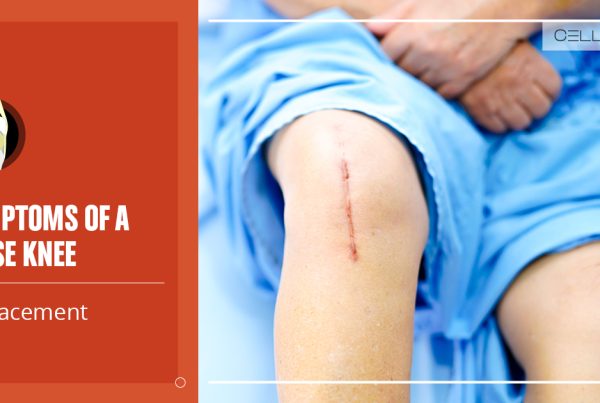Published on: December 31, 2022 | Updated on: January 18, 2025
In the United States, osteoarthritis affects approximately 24% (1 in 4) of adults, making it a leading cause of disability. It involves progressive degeneration of bones, which restricts mobility, apart from causing chronic joint pain.
While anti-inflammatory medications like NSAIDs and some other drugs help relieve symptoms, there’s no cure for a complete reversal of the disease. Therefore, several osteoarthritis patients turn to unconventional, non-medical methods to treat their condition.
If you’re looking for an alternative treatment for osteoarthritis, here are the seven most effective ones:
1. Herbs
Herbs are believed to have medicinal properties, so they have been used as a natural remedy for inflammatory diseases for centuries. Some commonly used herbs to relieve osteoarthritis-related pain include the following:
Aloe vera
Aloe vera contains chemicals called anthraquinones, which reduce inflammation and swelling, thus alleviating pain.
While it is widely available as a gel for topical application, aloe vera is also consumed as powder and pills. Unlike most herbs, it has minimal side effects and does not cause GI symptoms, i.e., it is well-tolerated.
Ginger
Ginger is another herb used as a remedy for joint inflammation. The herb inhibits leukotrienes production (chemicals that initiate and amplify inflammation in arthritis), which reduces swelling and pain. Taking up to 4g of ginger a day proves helpful in managing osteoarthritis.
Turmeric
Turmeric is an integral component of Ayurvedic medicine. The yellow color in the herb comes from an active ingredient called curcumin, which has dramatic anti-inflammatory properties. Turmeric is available in capsules, which osteoarthritis patients usually take thrice daily.
CBD
Cannabidiol, or CBD, is a derivative of hemp plants and a crucial element of herbal medicine. Over the years, the anti-inflammatory actions of CBD have been explored as an alternative treatment for osteoarthritis, and studies show promising results. Not only does CBD decrease swelling, but it also improves pain, mobility, and sleep quality in patients with degenerative joint diseases.
It is essential to mention that before using CBD, you should discuss the appropriate dosage with your physician, as the substance can cause side effects like dry mouth, diarrhea, drowsiness, and fatigue.
Cat’s Claw
Cat’s claw is a woody vine found in Amazon rainforests. It contains chemicals like tannins and sterols, which prove helpful in osteoarthritis.
A body substance called tumor necrosis factor (TNF) plays a vital role in developing and progressing inflammatory conditions. Cat’s claw suppresses TNF, which is why it can be considered an alternative treatment for osteoarthritis, according to the Arthritis Foundation.
However, it is crucial to mention that the herb has significant side effects that can range from lightheadedness and vomiting to exacerbation of autoimmune disease (with long-term use of cat’s claw).
Willow Bark Extract
Willow bark extract, popular as nature’s aspirin, is another effective alternative to anti-inflammatory drugs used for osteoarthritis.
The extract is concentrated with a chemical called salicin, which relieves joint pain. A study exploring the effects of willow bark derivatives found that administering 240 mg salicin proved substantially helpful in managing osteoarthritis.
However, mild to severe gastrointestinal symptoms were also reported after administration of salicylates (willow bark extract). These include ulcers, stomach bleeding, nausea, and vomiting.
2. Natural Supplements
Extracts from cells and secretions of plants, animals, and microorganisms contain several chemical compounds with varying therapeutic benefits. Therefore, these extracts are packaged and sold as different pills.
Here are some of these natural supplements used as an alternative therapy for osteoarthritis:
Fish Oil
Fish extracts are popular for several health conditions, such as bone diseases, cognitive decline, hypertension (high BP), cardiovascular disorders, etc.
In the case of osteoarthritis, the omega-3 essential fatty acids present in fish oil tablets reduce inflammatory substances associated with white blood cells. A study on osteoarthritis patients found a significant reduction in NSAID requirements in individuals who use fish oil.
It is important to note that excess use of fish oil supplements can have side effects like heartburn, nausea, skin rash, nose bleeds, and diarrhea. Therefore, you should avoid taking more than 3 gm of fish oil tablets daily.
Glucosamine
Glucosamine naturally occurs in the cushioning cartilage (between bones). It is reduced in joint diseases, which is why glucosamine extracts harvested from shellfish are used as supplements for osteoarthritis.
Mild side effects of glucosamine include bloating, diarrhea /constipation, and nausea.
Chondroitin
Like glucosamine, chondroitin is also a natural component of lubricating joint cartilage and is available as a tablet for osteoarthritis patients.
Vitamin C
Vitamin C extracted from fish is packaged as tablets. It reduces abnormal lesions in bone marrow, thus reducing inflammation and swelling.
However, it is essential to mention that excessive vitamin C intake can cause nausea, diarrhea, heartburn, fatigue, headache, and flushing. Therefore, its use should be strictly restricted to 75 mg in women, 90 mg in men, and 120 mg in pregnant women.
Vitamin D
Vitamin D is a fat-soluble vitamin essential for healthy bone density. While a type of vitamin D3 is produced naturally in the body, vitamin D2 occurs naturally in plants. D2 is extracted from plants and sold as a tablet to make up for vitamin D deficiency.
Although vitamin D is mainly advised for osteoporosis, research also shows its protective action in osteoarthritis. However, its intake can cause cardiovascular and renal complications, so the supplement dose should be no more than 10 to 20 micrograms a day.
Considering all these supplements can potentially cause mild to moderate health complications, it is best to use them only after discussing them with your physician.
3. Acupuncture
Ancient Oriental medicine believes specific points on the skin are linked with different landmarks on the body. Pressing on and stimulating these points (called Meridians lines) alleviates pain and various diseases associated with their respective areas.
Acupuncture is a technique in which needles are inserted at Meridian’s lines to treat health complications.
Research shows that acupuncture can relieve joint pain and stiffness as an alternative treatment for osteoarthritis. However, you should note that acupuncture is a risky procedure that can lead to pain, bruising, dizziness, and worsening of the disease.
4. Massage Therapy
Massage therapy relaxes the muscles surrounding the joints. Techniques like deep tissue massage apply sustained finger pressure on the muscles. This reduces stiffness, which in turn improves mobility.
Since the area around the joints is tender in osteoarthritis, it is essential only to apply mild to moderate pressure; otherwise, massage can worsen the pain.
5. Exercise and Weight Loss
Obesity is a critical risk factor for degenerative bone diseases, which is why yoga and weight-loss workout routines are considered alternative therapies for osteoarthritis.
Yoga involves various physical poses, so doing it regularly improves joint flexibility. Yoga is also centered around deep breathing and similar stress-relieving activities, promoting better sleep in osteoarthritis patients.
Overweight and obese individuals are prone to developing osteoarthritis because of the increased load on knees and hips. Regular workouts to achieve a healthy weight eases pressure on the joints, thus alleviating pain.
6. Cell-Based Therapies
Our bodies are made of several microscopic cells, which undergo a continuous cycle. When a tissue is damaged, new, healthy cells are naturally regenerated.
In inflammatory conditions like osteoarthritis, cells lose their natural ability to regenerate. In these patients, cell-based or stem cell therapy is administered. This involves transplanting healthy human cells (stem cells) in the diseased individual to replace the damaged tissue.
Stem cells are essentially your body’s raw material, which then differentiates into specialized tissues (like cells of the heart, brain, liver, kidney, bone, etc.). They can be derived from your fat tissue (Minimally Manipulated Adipose Tissue Transplant or MMAT) or bone marrow (Bone Marrow Concentrate or BMC).
While research estimating the effectiveness of stem cell therapy for osteoarthritis is still underway, several studies have recorded up to 80% success rate of regenerative treatment in other pathologies.
Considering that the risk of side effects can be reduced, especially if the cells are autologous (derived from healthy areas of the patient’s own body, stem cell therapy can be a safe and effective alternative treatment for osteoarthritis.
7. PRP Injections
Platelet-rich plasma therapy of PRP injections involves isolating platelets from a patient’s blood and reinjecting them into the spine.
Platelets are blood components that act as the first defense against pathological processes. They release growth factors to promote the regeneration of new cells. Additionally, they also form a fibrin clot that modulates inflammation.
We know that osteoarthritis patients lose their ability to replace damaged cells with healthy ones. Due to the healing properties of platelets, PRP injections have proven beneficial in reducing pain in these patients.
Stem cell transplant and platelet-rich plasma therapy (PRP) are orthobiologic methods of alternative treatment for osteoarthritis. Both these procedures are performed by experts at CELLAXYS in the outpatient department.
Health professionals at CELLAXYS follow the complete protocol of carefully examining your spine to ensure minimal complications and a safe and quick recovery. Based on their symptoms and diagnosis, patients are counseled about which of the two therapies is preferable for their treatment.
Sources
Footnotes
- Gaby AR. Natural treatments for osteoarthritis. Alternative Medicine Review. 1999;4:330-41.
- Klein AD, Penneys NS. Aloe vera. Journal of the American Academy of Dermatology. 1988;18(4):714-20.
- Khan NT. Curcumin a known anti-inflammatory and antioxidant agent. International Journal of Molecular Biology. 2019;4(1):24-5.
- Frane N, Stapleton E, Iturriaga C, Ganz M, Rasquinha V, Duarte R. Cannabidiol as a treatment for arthritis and joint pain: an exploratory cross-sectional study. Journal of Cannabis Research. 2022;4(1):47.
- Jeffery LE, Raza K, Hewison M. Vitamin D in rheumatoid arthritis—towards clinical application. Nature Reviews Rheumatology. 2016;12(4):201-10.
References
- 5 Alternative Treatments for Osteoarthritis. Arthritis Health. Accessed 9/14/2023.
- Arthritis. Centers for Disease Control and Prevention. Accessed 9/14/2023.
- Ginger. Versus Arthritis. Accessed 9/14/2023.
- Fish oils. Versus Arthritis. Accessed 9/14/2023.
- Supplement and Herb Guide for Arthritis Symptoms. Arthritis Foundation. Accessed 9/14/2023.
- Willow bark. Mount Sinai. Accessed 9/14/2023.
- Acupuncture: What You Need To Know. National Center for Complementary and Integrative Health. Accessed 9/14/2023.
CELLAXYS does not offer Stem Cell Therapy as a cure for any medical condition. No statements or treatments presented by Cellaxys have been evaluated or approved by the Food and Drug Administration (FDA). This site contains no medical advice. All statements and opinions are provided for educational and informational purposes only.
Dr Pejman Bady
Author
Dr. Pejman Bady began his career over 20 years ago in Family/Emergency Medicine, working in fast-paced emergency departments in Nevada and Kansas. He has served the people of Las Vegas as a physician for over two decades. Throughout this time, he has been met with much acclaim and is now the head of Emergency Medical Services in Nye County, Nevada. More about the doctor on this page.
Dr Pouya Mohajer
Contributor
Pouya Mohajer, M.D. is the Director of Spine and Interventional Medicine for CELLAXYS: Age, Regenerative, and Interventional Medicine Centers. He has over 20 years of experience in pain management, perioperative medicine, and anesthesiology. Dr. Mohajer founded and is the Medical Director of Southern Nevada Pain Specialists and PRIMMED Clinics. He has dedicated his career to surgical innovation and scientific advancement. More about the doctor on this page.









